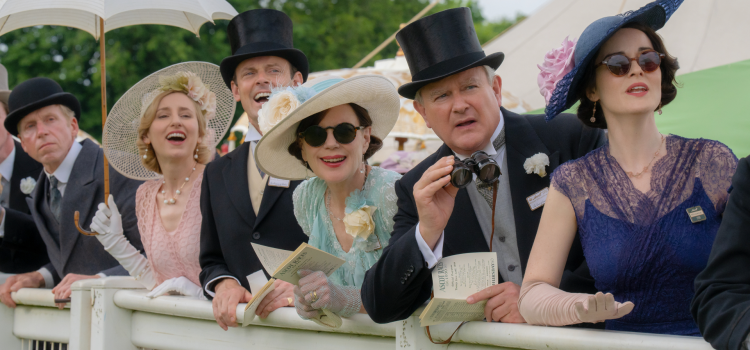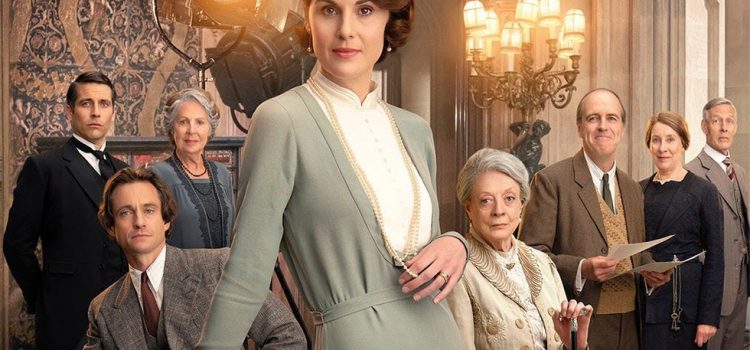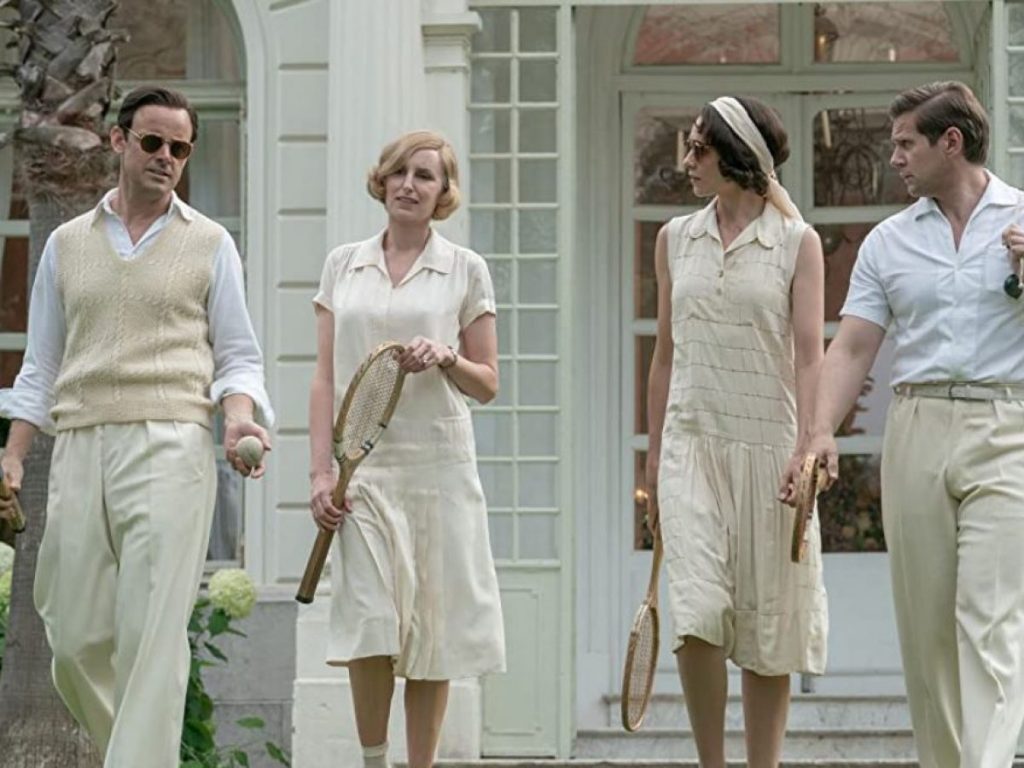By Lynn Venhaus
A bittersweet wrap-up of the classy historical drama, “Downton Abbey: The Grand Finale” is a fitting final bow for its legion of fans.
The beloved television series started in Edwardian England and ran for six seasons on PBS, winning 15 Emmy Awards, and was followed by a popular film trilogy, the first in 2019 and second “A New Era” in 2022.
Reminiscent of the British television hallmarks “Upstairs, Downstairs” and “Brideshead Revisited,” but “Downton Abbey” had more soap opera elements, optimistic tone, and used the past to reflect on present class and gender issues.
The rich-people problems of the Earl of Grantham’s family captivated with their depiction of a regal world, class dynamics, the historical impact of the 1910s and 1920s, and their relationships with their servants.
All helmed by director Simon Curtis, he maintains their winning formula of heartbreak, joy, intrigue, and luxury in the latest endeavor. For viewers who have never seen the series, you will be able to follow along without frustration.
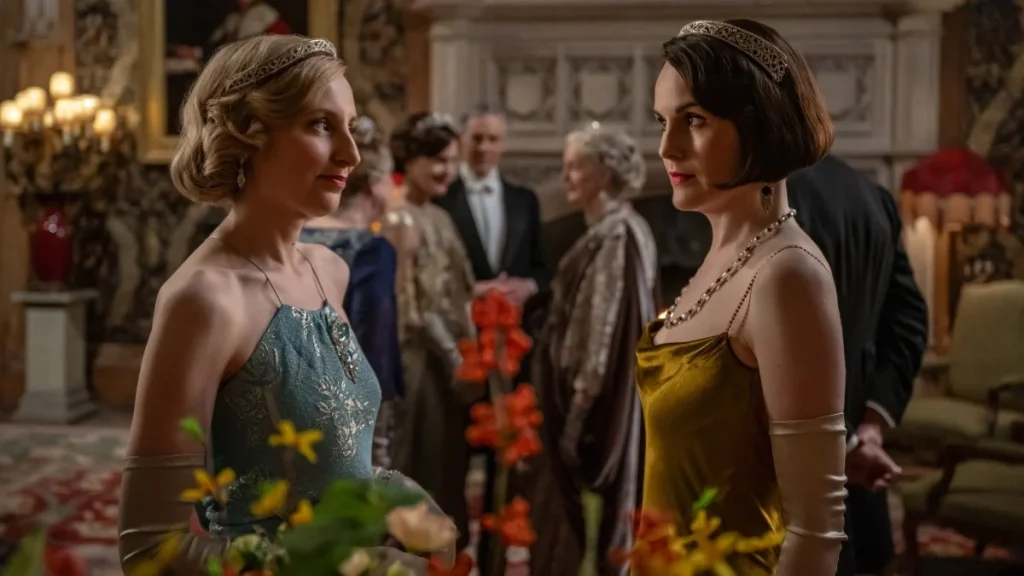
Redolent with warm humor and lavish designs, creator and writer Julian Fellowes’ compelling narratives on the aristocrats upstairs and their dedicated staff downstairs have taken fans on a transportive journey through every corner of the grand country homestead and grounds (the real Highclere Castle in north Hampshire stands in).
In this one, set during the global economic crisis that was the Great Depression in the 1930s, it’s clear that the times are changing. The principal characters start out enjoying the London social season, but trouble intrudes.
The family, now with money woes post-stock market crash, faces societal changes, and a necessary shift in direction. Their traditional way of life is disappearing.
From the beginning, Lord Robert Crawley (Hugh Bonneville), Earl of Grantham, always saw Downton Abbey as his family heritage, and now must wrestle with moving on and allowing the next generation to take over.
After his heir’s death aboard the R.M.S. Titanic, his distant cousin, Matthew Crawley (Dan Stevens), was next in line. He married Robert’s daughter Lady Mary (Michelle Dockery), and after he died in a car crash, and she later married Henry Talbot (Matthew Goode), others believed that Mary should inherit the vast estate.
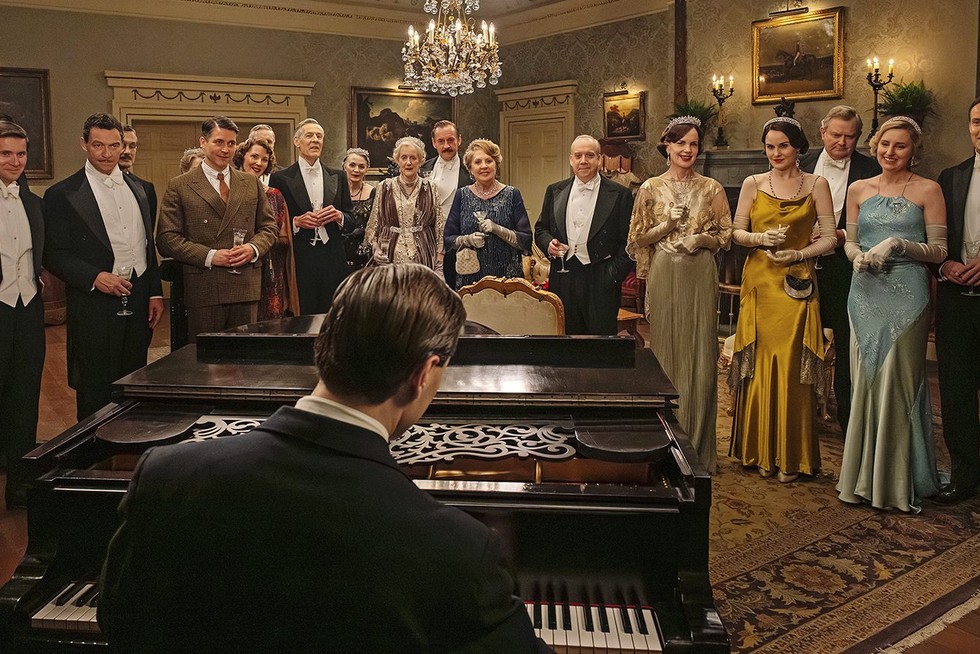
So that is at issue. Mary has another scandal to deal with, publicly played out, and there is a family matter that involves her mother, Countess Cora (Elizabeth McGovern). Her brother, Harold Levinson (Paul Giamatti), arrives from his home in America with a financier friend, Gus Sambrook (Alessandro Nivola). Further complications arise, which fans will find out soon enough.
The twisty line of succession, staff retirements, and future residences are also part of the plot that provides fans with nods for their loyalty. The emotional tugs are there, if not the conflicts.
There isn’t a dramatic occasion like King George V and Queen Mary arriving on their tour of Yorkshire in 1927, as in the first film, followed by Violet Crawley’s inheritance of an Italian villa in 1928 and a film crew using the estate for a movie shoot in the second one.
However, this third go-round doesn’t leave stones unturned and looks towards a world where Thomas Barrow (Robert James-Collier), formerly of the house staff who is the dresser for dashing movie star Guy Dexter (Dominic West), is allowed to mingle upstairs with guests.
Just as Bonneville’s Lord Robert is grumpy about his displacement, so is ‘retired’ butler Charles Carson (Jim Carter). He is reluctantly relinquishing his duties to eager Andy Parker (Michael Fox), who – gasp – has a mind of his own.
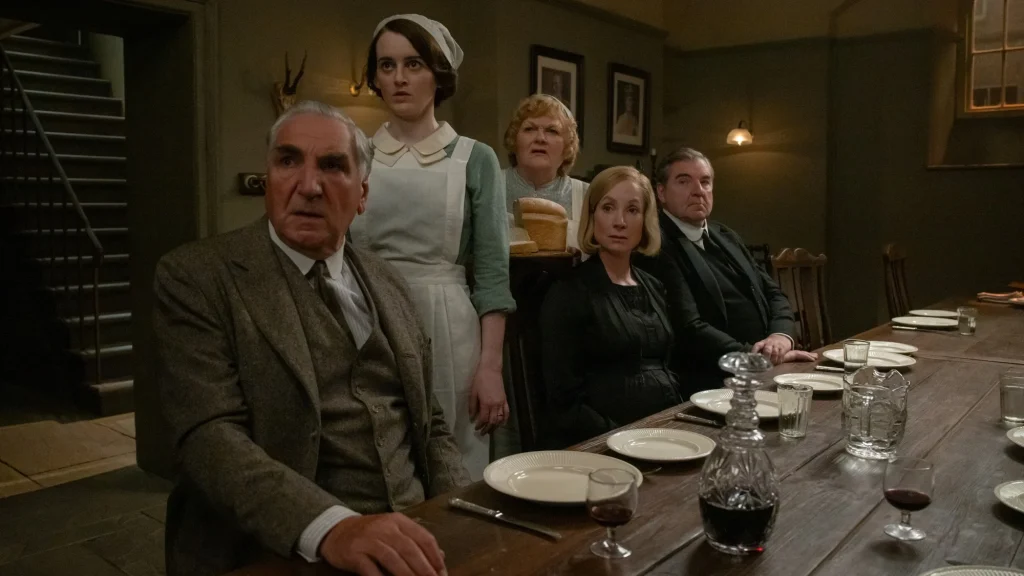
Those who have a special fondness for the humble downstairs folks can rejoice, because the staff characters are as appealing as ever. The delightful cook Mrs. Patmore (Lesley Nicol) and housekeeper Elsie Hughes, played by chipper Phyllis Logan, are among the many fan favorites.
As pregnant Anna Bates, Joanne Froggatt takes good care of Lady Mary as her maid, and her doting husband, valet John Bates (Brendan Coyle), takes good care of her. Always a bright spot, Daisy Parker (Sophie McShera) takes on a bigger role in the kitchen.
Another welcome addition is impressive Arty Foushan as a cheeky Noel Coward, the sharp-witted playwright who charms every person he meets at a Grantham dinner party – and even gets an idea for his next play by hearing about Lady Mary’s private life (wink, wink).
As always, the ensemble cast is strong – and so are the attachments to them. The sprawling cast conveys its customary lived-in quality and longtime association with each other in heartwarming fashion.
Among family members, Laura Carmichael shows Lady Edith’s inner strength in a new way, especially in steadfast support of her sister. And Allen Leach is always a voice of reason as Tom Branson.
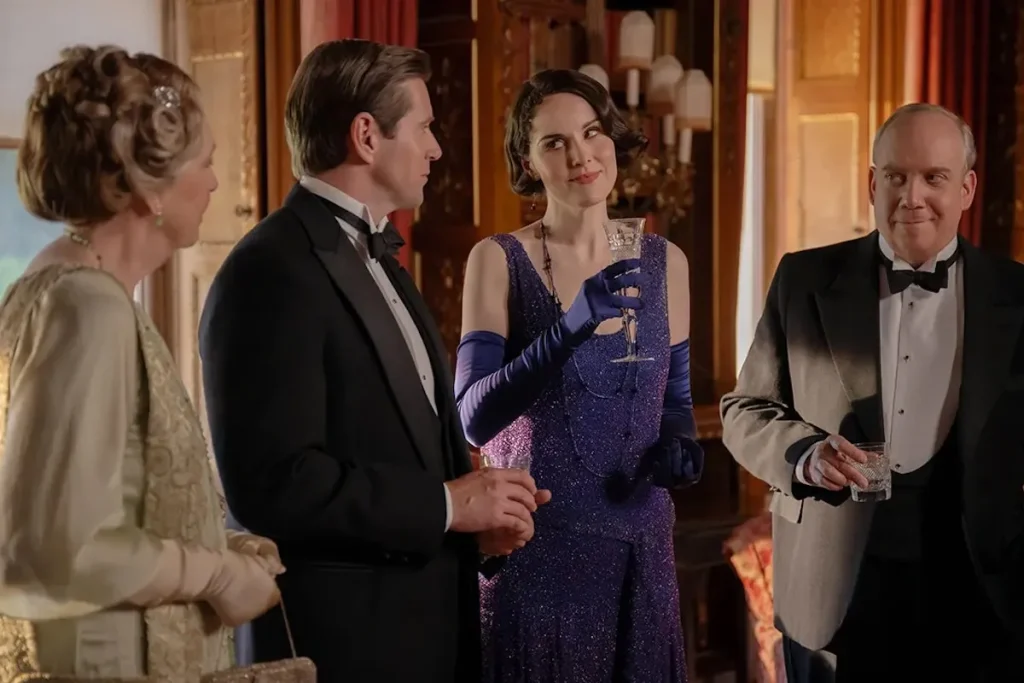
As progressive Isobel, Penelope Wilton is always a welcome presence, and she comically tussles with a huffy snob Sir Hector Moreland (the great Simon Russell Beale) at the county fair.
For its swan song, the cinematography by Ben Smithard, costumes by Anna Robbins, production design by Donal Woods and variations on the familiar theme music by composer John Lunn are opulently crafted.
Not only does Robbins surpass herself on the ballgowns and party clothes, but she outfits an Ascot afternoon with an incredible array of hats.
The series MVP, two-time Oscar winner Maggie Smith as dowager Countess Violet Crawley, left a huge gap after her death last year. Her character’s death was written into the second film, and tributes continue here. But her sparkling quips are dearly missed.
Fans who fell in love with this story 14 years ago are welcomed to the party, and it’s a fond farewell full of wit, sentiment and a warm hug of nostalgia.
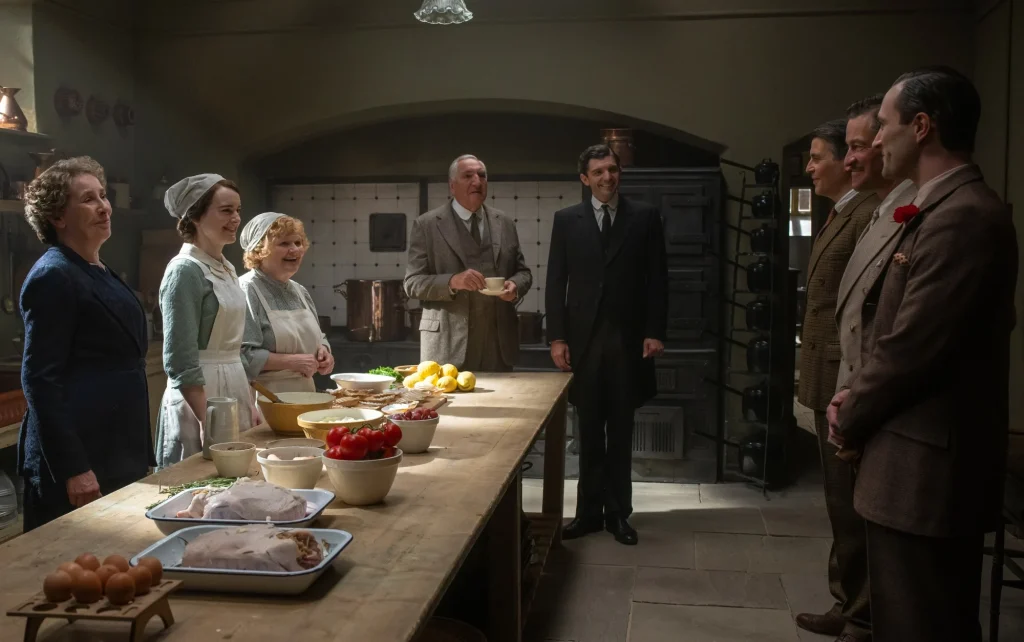
“Downton Abbey: The Grand Finale” is a 2025 period drama, directed by Simon Curtis and starring Hugh Bonneville, Michelle Dockery, Elizabeth McGovern, Laura Carmichael, Jim Carter, Lesley Nicol, Phyllis Logan, Allen Leach, Arty Foushan, Paul Giamatti, Alessandro Nivola, Sophie McShera, Brendan Coyle, Michael Fox, Joanne Froggatt, Simon Russell Beale, Robert James-Collier, and Dominic West. It is rated PG for suggestive material, smoking and some thematic elements and run time is 2 hours, 3 minutes. It opens in theatres Sept. 12. Lynn’s Grade: B.

Lynn (Zipfel) Venhaus has had a continuous byline in St. Louis metro region publications since 1978. She writes features and news for Belleville News-Democrat and contributes to St. Louis magazine and other publications.
She is a Rotten Tomatoes-approved film critic, currently reviews films for Webster-Kirkwood Times and KTRS Radio, covers entertainment for PopLifeSTL.com and co-hosts podcast PopLifeSTL.com…Presents.
She is a member of Critics Choice Association, where she serves on the women’s and marketing committees; Alliance of Women Film Journalists; and on the board of the St. Louis Film Critics Association. She is a founding and board member of the St. Louis Theater Circle.
She is retired from teaching journalism/media as an adjunct college instructor.

